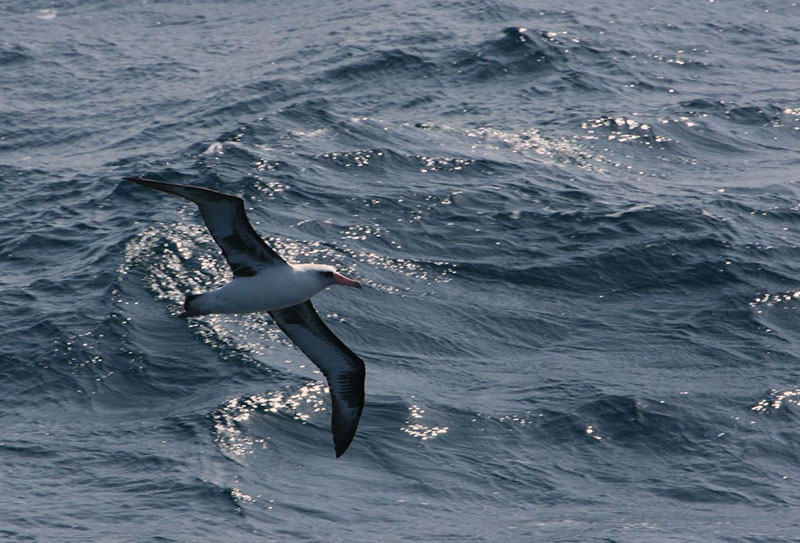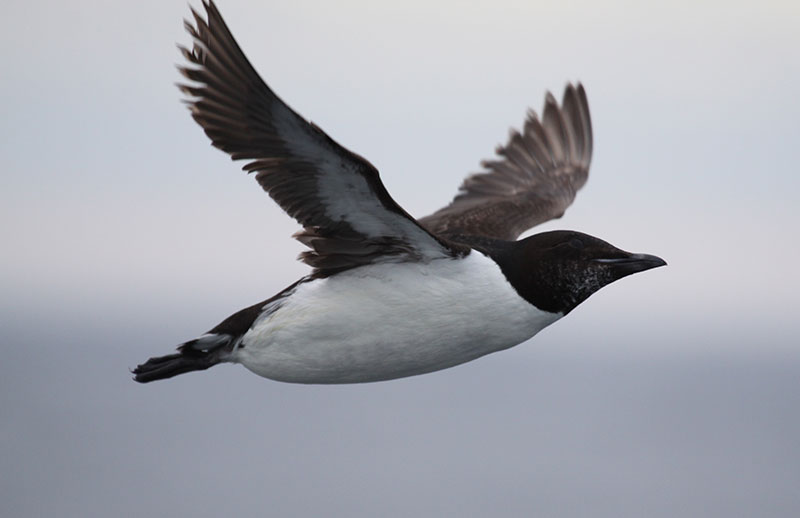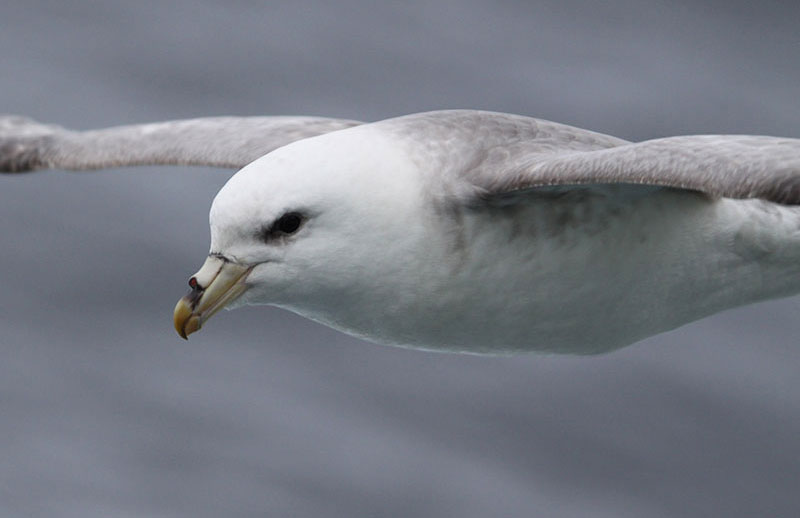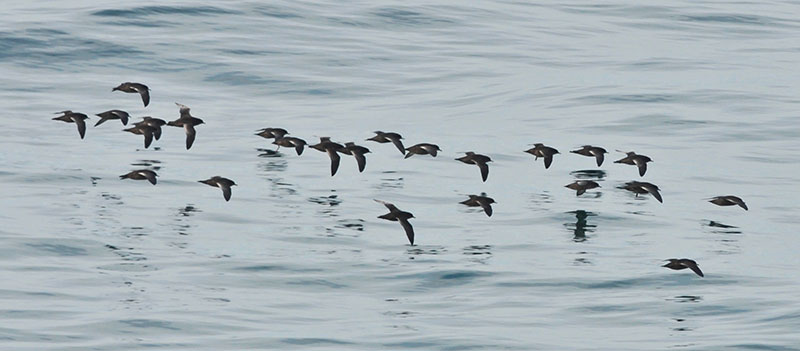
by Kathy Kuletz, Seabird Coordinator/Wildlife Biologist, Migratory Bird Management, U.S. Fish and Wildlife Service

The Laysan Albatross can travel long distances across the ocean. Image courtesy of Liz Labunski, USFWS. Download larger version (242 KB).
Seabirds rely on coastal islands and cliffs to lay eggs and raise young, but they feed themselves and their chicks from the sea and spend most of the year far from shore. Thus, seabirds link the land to the sea, with most species completely dependent on marine ecosystems for their food.
Most of the breeding seabirds in U.S. waters nest in Alaska, and those are joined by millions of birds from the Southern Hemisphere to feed in rich northern waters during long summer days. Many of these seabirds nest in the Chukchi Sea, or they migrate to the region once finished with chick-rearing. Compared to the Bering Sea, there are fewer colonies in the Chukchi, which lacks the steep rocky cliffs and islands that birds prefer.
The birds that nest along the Chukchi coastline are mainly fish-eating species such as murres, puffins, kittiwakes, and gulls. But other species join them in late summer and fall, including tundra-nesting shorebirds and sea ducks, as well as crested and least auklets from the Bering Sea colonies. Ancient and Kittlitz’s murrelets also arrive from Gulf of Alaska breeding grounds and short-tailed shearwaters from New Zealand. By mid to late September, the birds start heading south again and their numbers drop sharply by October.
Seabird abundance and distribution is highly seasonal, as few species remain once ice covers the water. In spring and early summer, seabirds take advantage of the open water leads and polynyas, which may provide protection from wind and waves and provide access to amphipods, crustaceans, zooplankton, and small fish. Circumpolar wanderers, like Ross’s gull and ivory gull, can also be found scavenging around walrus, seals, and polar bears.

The thick-billed murre is a fish-eating species that nests along the Chukchi coastline. Image courtesy of Sophie Webb, USFWS. Download larger version (jpg, 1.7 MB).

The northern fulmar nests in the Bering Sea but can sometimes be found traveling through the Chukchi Borderland. Image courtesy of Sophie Webb, USFWS. Download larger version (jpg, 1.2 MB).
Once the ice retreats, what appears as a featureless sea to us is not to seabirds. Seabirds appear to key in on ‘fronts’ formed by the boundaries of different water masses, with larger groups of birds foraging in ‘hotspots’ where zooplankton or fish are concentrated or forced to the surface by currents and upwelling from undersea canyons and shelf edges. One such region is the Barrow Canyon, which is rich from the sporadic influx of easterly flowing Beaufort Sea waters.
You can get a good idea of what types of undersea creatures are around by where the seabirds are. Different species sample different parts of the water column, depending on whether they eat zooplankton or fish, or if they dive in pursuit or pick prey from the surface.
In the Chukchi Sea, the community of seabirds observed during ship-based surveys has changed over the last 40 years, with subarctic species, especially planktivores (seabirds that eat zooplankton) and omnivores, increasing as the number of ice-free days increase. Fish-eating (piscivorous) birds, like murres and kittiwakes once predominated offshore.
These changes in the seabird community correspond to increases in stocks of copepods and euphausiids, which, along with longer ice-free seasons, has attracted post-breeding planktivores to the Chukchi Sea. Still, colony-based counts indicate that murre and kittiwake populations have also increased since the 1980s at Cape Lisburne, one of the major seabird colonies in the eastern Chukchi Sea. One of our long-term questions is whether and how the seabird community at sea might change again in the future.
We’ve had few surveys for seabirds north of 72° (5 out of 73 Alaska seabird surveys, 2008-2015), but based on those, seabirds are likely to be few and far between, with only a handful of species represented. The seabirds encountered that far north tend to be highly mobile flyers and long-distance migrants, some of which have left nesting grounds in the Alaska tundra and are heading south for the winter, such as Arctic terns, red phalaropes, and jaegers. But, in addition, there have been black-legged kittiwakes, which nest throughout Alaska; northern fulmars that nest in the Bering Sea; and short-tailed shearwaters that nest in the Southern Hemisphere.

Short-tailed shearwaters fly from New Zealand to the Chukchi coastline in late summer. Image courtesy of Luke DiCicco, USFWS. Download larger version (505 KB).
Beyond 74° north, birds are rarely encountered, probably because the availability of open water limits foraging opportunities. Exceptions are birds that can scavenge opportunistically on marine mammal waste and carcasses, such as glaucous gulls and a few stray jaegers.
However, the much reduced ice cover in 2016 could literally open up a new world, and being wide-ranging and exploratory, seabirds are often among the early pioneers of newly available habitat. The Chukchi Borderlands expedition will offer a unique opportunity for us to see just how far north seabirds will go, and which species will find enough suitable prey to stick around during the ice-free season.